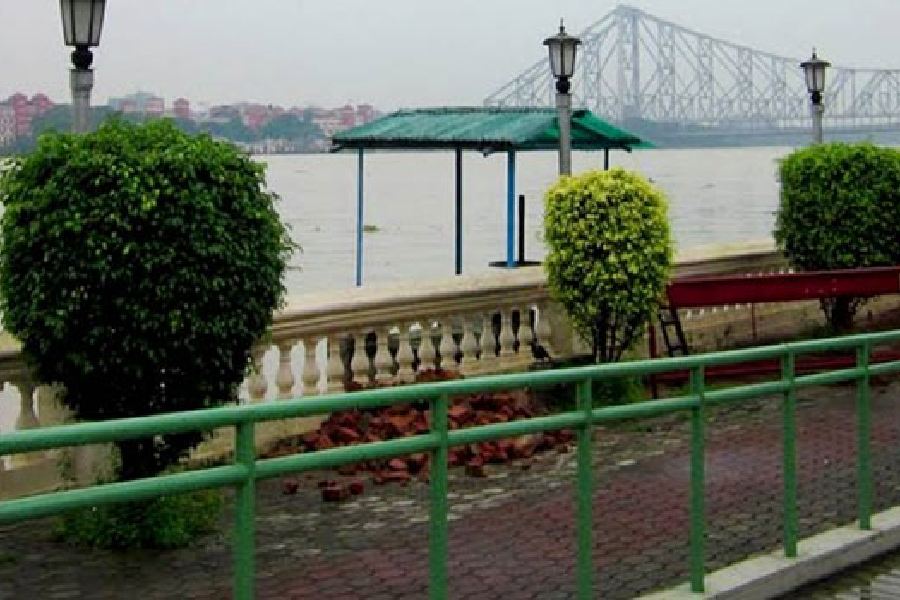The riverbank along Millennium Park, the vast open public space along the Hooghly thronged by thousands every day, is eroding fast and in many places the river has eaten up concrete slopes and boulders meant to protect the banks.
The erosion is leaving its imprint on the park as well, with the walkways caving in on some stretches.
Engineers of the Kolkata Municipal Corporation (KMC), the custodian of the park, said the soil under the walkway is becoming loose because of the erosion of the riverbank. A gaping hole — about 1foot deep — has formed on a stretch where the soil under the tiled pathway has disappeared.
Concrete slopes meant to protect the bank have disintegrated. On several stretches, boulders have been washed away or worn into smaller stones.
The Telegraph has reported about the problem of erosion along Nimtala Ghat and near the Burrabazar railway station. A KMC official said a portion of a park in Burrabazar was washed away by the river a few years ago.
Millennium Park, on Strand Road, is visited every day by morning walkers, couples, families and those with some time between two assignments. On festive days, the park teems with people and there is hardly an empty corner.
The eroded riverbanks include the stretches opposite Customs House, the new Koilaghat office of Eastern Railway and Metcalfe Hall. When The Telegraph visited the park on Tuesday afternoon, broken concrete slabs lay scattered.
“Shifting soil could be the reason for the undulated walkways in Millennium Park. Erosion along the riverbanks could be the reason for the soil shift. In many places, the boulders have eroded and the concrete walls broken,” said a KMC official.
Sources in the Bengal government said riverbank protection is the responsibility of Kolkata Port Trust, the custodian of the land up to 47m from the high tide line of the Hooghly.
A spokesperson for the port trust said they would “comment after looking into the matter”.
The erosion is not “abnormal” because Howrah and Kolkata have constricted the river and tried to stop its natural tendency to spill over the floodplains, said river scientist Kalyan Rudra.
“We cannot return the river its floodplains because we have already built on it. Piecemeal repair of eroded banks is the only option,” said Rudra, who is also chairperson of the state’s pollution control board.
“Both cities have been built encroaching on space that should have been the river’s. This was done during colonial era and we have continued with constructions on the river’s floodplains,” he said.
During lean seasons like winter or spring, the difference in water levels between high tide and low tide is about two or three metres. It goes up to more than five during the monsoon.
A guard posted at Millennium Park for a decade said he has seen river come significantly closer to the park over the past 10 years.
Subhas Datta, an environment activist who has petitioned the National Green Tribunal about the discharge of waste into the Hooghly and the erosion of the riverbanks, said the situation is worse in Howrah than in Kolkata.
